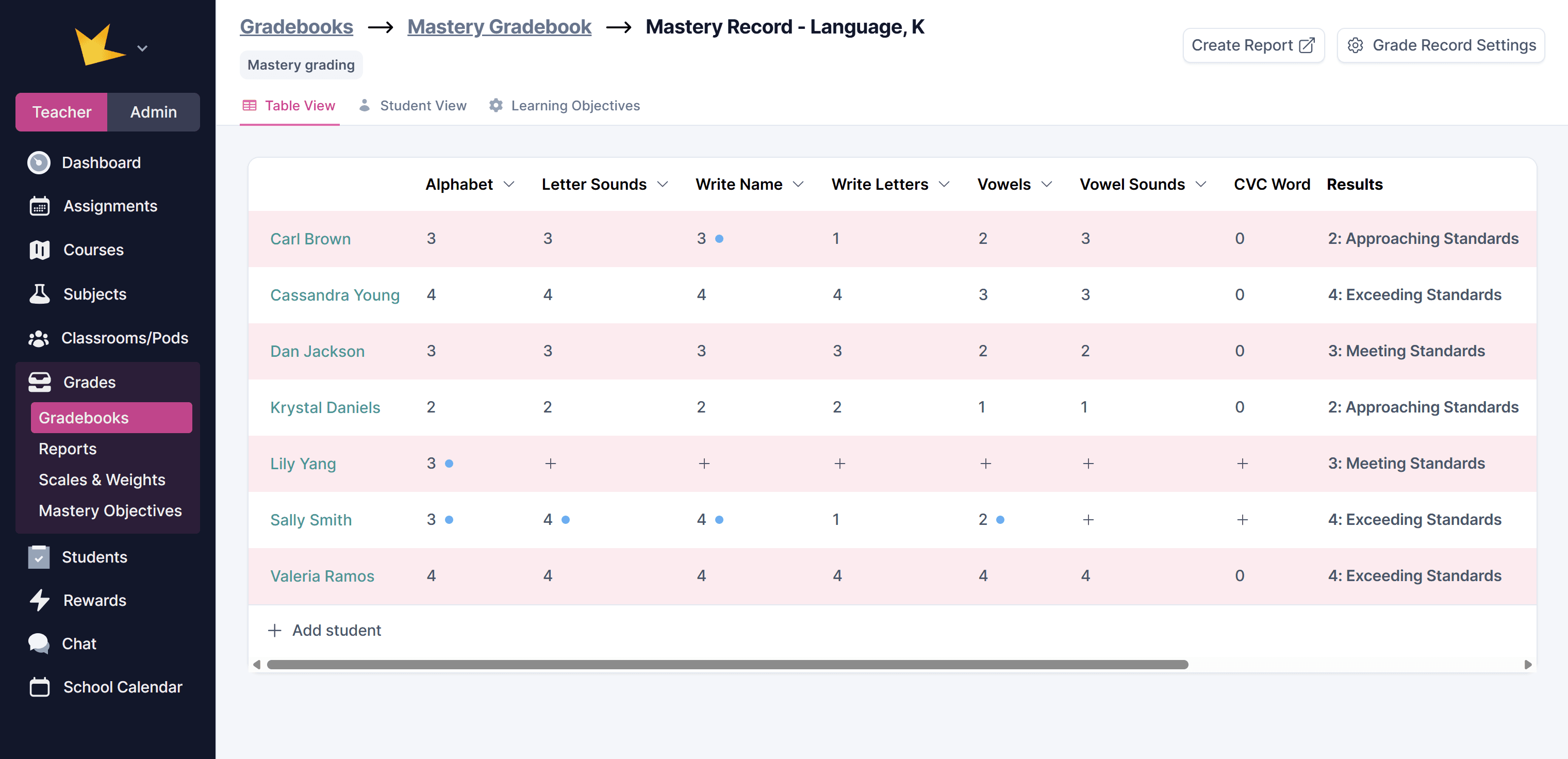Mastery Grading
Meaningful Learning Objectives
Mastery grading helps students grow by focusing on what they’ve actually learned—not just the points they’ve earned. Instead of averaging scores, it tracks progress toward clear, meaningful learning objectives.

Mastery Grading in Spark provides
Clarity
Students and teachers always know where learning stands with objective-based progress tracking.
Flexibility
Grade with custom scales, mark progress over time, and revisit objectives as students grow.
Support
Mastery grading encourages learning from mistakes and trying again—because progress matters.
Alignment
Every grade reflects real understanding, not just performance on one test or assignment.